The Vietnam War was both a cold war and a military conflict which happened in Vietnam, Laos, and Cambodia from November 1, 1955 to April 30, 1975. The Vietnam War was fought between North Vietnam supported by its Communist allies and the government of South Vietnam supported by the U.S. and other anti-Communist countries. South Vietnam’s National Liberation Front, NLF, which is popularly known as the Vietcong, fought the guerrilla war while the opponents fought a more conventional war. The American and Vietnamese forces relied upon the Air Force and massive firepower which they had against the Vietcong who were equipped only with light arms. The U.S. military’s involvement ended after the Case Church Amendment by the U.S. Congress on August 15, 1973. The war took a heavy toll as, according to some estimates, the Vietnamese war casualties exceeded 3 million while 200,000 to 3,000 Cambodians and almost the same number of Laotians were killed. Recorded U.S. casualties were 58,220 service members.
1. The Battle of Ia Drang
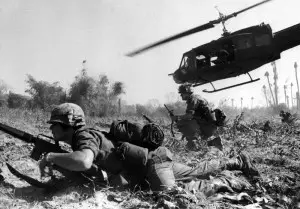
The Battle of Ia Drang was the first direct confrontation between the regular U.S. Army and regular People’s Army of Vietnam, PAVN. It was named after the Drang River which flows through the valley of Plei Me where the battle was fought. The battle started on November 14, 1965 and ended on November 18, 1965. The U.S. forces repulsed the first Vietnamese offensive against the landing, but a follow-up on the 16th killed almost 150 Americans within 16 hours. A total of 300 Americans were killed during the battle. U.S. forces were represented by the 3rd Brigade, 1st Cavalry Division, and 2nd Battalion of the 7th Cavalry Regiment, and 2nd Battalion of the 5th Cavalry Division. The battle was fought at about 35 kilometers from Plei Me. The battle was documented by the CBS special report Battle of Ia Drang Valley by Morley Safer. National Geographic documented it as Day under Fire: Vietnam War.
2. The New Year’s Day Battle
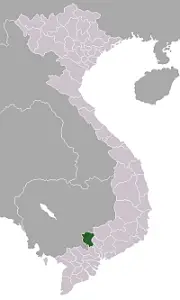
The New Year’s Day Battle was fought on January 1, 1968 between the units attached to the American 25th Infantry Division and a regiment of the North Vietnamese Army, NVA. Pope John Paul VI , before the end of the year 1967, declared the first day of the New Year (January 1, 1968) as a day of peace and persuaded both the Americans and the South Vietnamese to observe it with a 38-hour ceasefire. Both agreed upon it, but 6 hrs before the end of the ceasefire, a 2500 force of soldiers of the Vietnamese attacked the American positions in 3 waves. The Americans succeeded in repelling them with the help of 28 air sorties of AC-47 helicopters and artillery support. The battle, however, ended with an excessive loss of human lives. Americans killed 348 enemy soldiers while the enemy killed 176 U.S. soldiers.
3. The Battle of Suoi Bong Trang

The Battle of Suoi Bong Trang was fought on February 23rd and 24th, 1966 between the U.S. Army along with the Australian Force against the Vietcong along with the North Vietnamese Army. Americans conducted Operation Rolling Stone to protect the engineers who were building a road about 30 kilometers away from the Bien Hoa Airbase. The 1st Brigade U.S. 1st Infantry Division and 1st Battalion, Royal Australian Regiment fighting together repulsed a regiment size Vietcong attack inflicting heavy casualties upon them. The Vietcong retreated and did not attempt to attack again. The road was completed by March 2, 1966.
4. The Battle of Xa Cam My
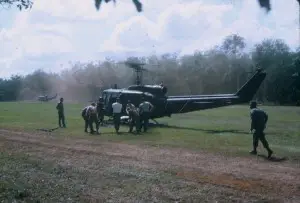
The Battle of Xa Cam My was fought on April 11th and 12th, 1966. The battle was fought by the U.S. 1st Infantry Division, New Zealand Artillery, and 1st Battalion Royal Australian Regiment against Crack, the Viet Cong D 800 Battalion. The American Operation Abilene aimed at searching and destroying the elusive Vietcong D800 Battalion. They forwarded the Charlie Company as bait to lure the Vietcong, and when the Vietcong finally encircled the Charlie Company, or the bait was taken, the Americans opened fire which was unluckily misdirected adding to the misery of the Charlie Company. Moreover, the enforcement could not be sent ahead of time as planned due to the thick forests between them. The Vietcong succeeded in collecting their casualties as well as inflicting heavy enemy casualties. During the 2-day war, almost 80 percent of the Charlie Company was wiped out.
5. The Battle of Lima Site 85
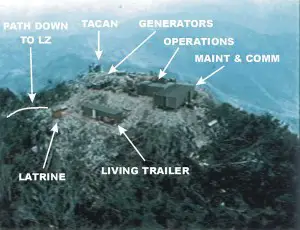
The Battle of Lima Site 85 was an attack by the superior forces of the Vietnam People’s Army, VPA, on the American Lima Site 85 in the neutral Kingdom of Laos. The site had an air strip, a command post, helicopter landing zone, and commando club radar. The battle included artillery, infantry assault, and an air raid. The Lima Site 85 was captured by the 41st Special Forces Battalion until their retreat. The VPA captured 9 heavy machine guns, 4 heavy mortars, 4 recoilless rifles, 1 85 mm artillery piece, 1 105 mm Howitzer, and lot of ammunition. It was a great loss for the U.S. Air Force.
6. The Battle of Nui Le
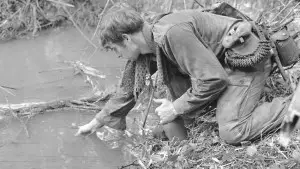
The Battle of Nui Le was fought on September 21, 1971 between B and D companies of the ANZAC Battalion and the 33rd regiment of the North Vietnamese army in Phuoc Tuy Province. The Australian Government had decided in 1970 to withdraw the Australian forces from Vietnam. The withdrawal was scheduled to be completed by the end of the year 1971. Intelligence reported a major Vietcong buildup near Phuoc Tuy. During this battle, 5 Australians were killed and 30 were wounded. Fourteen bodies of the Vietnamese were found on the battlefield. Second Lieutenant Garry McKay, who was severely wounded while fighting, was awarded the Military Cross.
7. The Battle of Haiphong Harbor
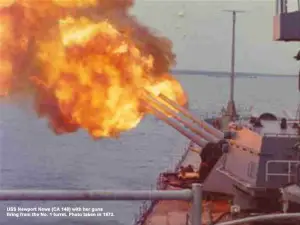
The Battle of Haiphong Harbor was one of the few naval battles fought in the Vietnam War. It was fought on August 27, 1972 between the U.S. Navy and the North Vietnamese forces protecting the Haiphong Port. A pair of naval attack aircrafts and four U.S. Navy warships launched a raid against the Vietnamese. Bombarding in the vicinity of Haiphong, the American warships targeted the enemy gun positions and also sank three of the four Russian-built torpedo boats. The New York Times commented on the battle as ‘a daring raid into strongly defended enemy territory….. The enemy has once again been reminded of the mobility of the fleet.’
8. The Battle of Tra Binh Dong
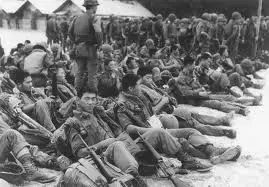
The Battle of Tra Binh Dong was fought on February 15, 1967 between the South Korean Marines and the North Vietnamese Army. On February 14 the 40th and 60th Battalions of North Vietnamese surrounded the 11th South Korean Company. The battle was prompted by the Communist forces trying to cut the wires while the South Korean Marines were awaiting air support which could not be extended on time due to heavy fog. With a little, initial success, the North Koreans had to retreat ultimately leaving behind 246 bodies. At the end of the battle, the South Koreans captured 5 anti-tank launchers, 2 machine guns, 28 rifles, and more than 6,000 rounds of ammunition.
9. The Battle of Bong Son
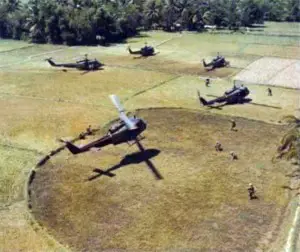
The Battle of Bong Son was fought at Bong Son, South Vietnam from January 28 to February 12, 1966. It was the second main battle of the U.S. First Cavalry Division. It was also known as Operation Irving. The battle started as a pursuit of the Vietnam People’s Army. About 12 million leaflets were used during this battle. Curfews were imposed, rewards were offered for surrendering weapons, and the result was a tactical win of the U.S. and South Vietnamese Army.
10. The Battle of Gang Toi
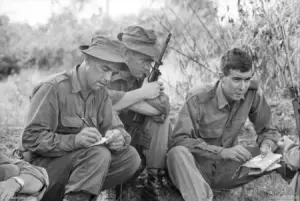
The Battle of Gang Toi was fought on November 8, 1965 between the Vietcong and the Australian troops during the Vietnam War. The battle started when the First Royal Australian Regiment attacked the bunker system of the Vietcong in the Gang Toi Hills in the Bien Hoa Province. It was a joint American-Australian operation called Operation Hump involving the U.S. 173 Airborne Brigade. In the final phase, the Australians confronted the Vietcong force and were forced to withdraw leaving behind 2 bodies which were recovered after 40 years and sent to Australia for burial. The Australians intended to try again, but the American Brigade Commander canceled their plan due to a shortage of helicopters available for the purpose.
Conclusion:
The renowned, heavyweight, World Champion Mohammad Ali, when asked to join the U.S. Army, offered a very reflective and conclusive remark, ‘Why should they ask me to put on a uniform and go 10,000 miles from home and drop bombs and bullets on brown people in Vietnam while so-called Negro people in Louisville are treated like dogs and denied simple human rights? No, I’m not going 10,000 miles from home to help murder and burn another poor nation simply to continue the domination of white slave masters of the darker people the world over…’










January 28, 2013 1:57 pm
Nicely done. Of course you can’t report the battles we fought in Cambodia. It wasn’t brought to light until the Honorable President Richard M. Nixon informed the U.S. public and the world we were fighting there too.
February 22, 2021 9:19 pm
I cant believe any of The Hill Battles , Hill 881 North 881 South and 861 North and 861 South ,fought by Marines were mentioned .
October 6, 2019 2:41 pm
Actually, this is not very well written or proof-read. Under #8 Battle of Tra Binh Dong for example, when did the North Koreans fight in the Vietnam war? And honestly, what does a comment by Mohammad Ali have to do with “Famous Vietnam battles?